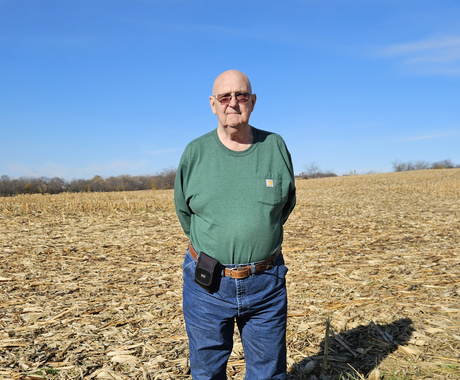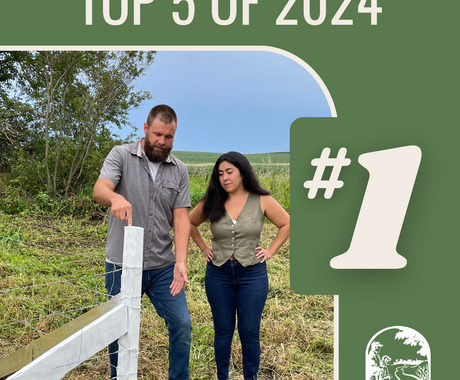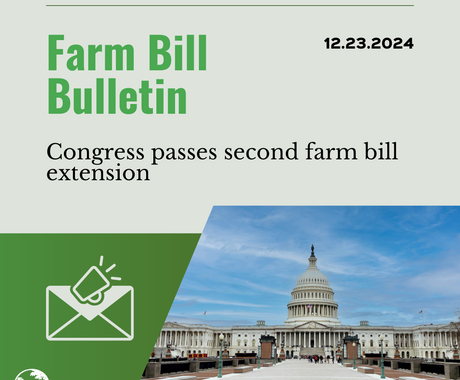By Lacie Dotterweich, former staff member
Josh Nelson, of Belmond, Iowa, has used cover crops for three years. In that time, he has witnessed better yields and water filtration on his land. He also learned a few lessons, which he shared at a recent field day hosted by Practical Farmers of Iowa.
Nelson’s farm is located near environmentally sensitive land and runs alongside rivers, which makes improving soil health very important. During his first year of implementing cover crops, he received funds from the local Natural Resources Conservation Service (NRCS), which allowed him to experiment with what worked best for his farm. He now is able to fund the project himself.
First-year lessons included developing a plan for management before planting, knowing general time windows for applying and terminating cover, and remembering that poor termination can lead to headaches. Nelson learned the latter the hard way. He sprayed to terminate, which was followed by cool temperatures. This caused an inconsistent kill for his rye. Later on, a friend shared a piece of wisdom: wait to spray until you mow your lawn twice, to make sure the higher temperatures are here to stay.
At the event, over a lunch of turkey and cheese sandwiches, I chatted with one farmer from northern Missouri who has years of experience planting winter rye with his corn. He came looking for information on good cover crop options to plant after his beans.
Another farmer, new to cover crops, found that after only one year of planting oats and radishes, the water absorption in his soil had already improved. He shared that, after a heavy rainstorm, a neighbor who doesn’t plant cover crops had standing water in the fields, while his own fields had no standing water, even in the low spots.
According to the NRCS, cover crops drastically reduce the amount of erosion in cropland. These plants improve soil structure, stability, and increased moisture and nutrient holding capacity for plant growth. Runoff is reduced through improved infiltration, which keeps the water in the soil and roots rather than running off the top of the soil.
Also presenting at the field day was Humboldt County NRCS employee and local farmer, Doug Adams, who has planted cover crops for six years. He used a rainfall simulator to “rain” two inches of water into two types of soils ‒ one from a field with cover crops and one from a field without. The soil from the field without cover crops barely held any water, while the soil from the field with cover crops retained nearly all of the water. Healthy soil should hold together instead of falling apart; it should have good compaction, roots should be growing deep, and there should be worms.
With all of the benefits, why don’t farmers plant more acres in cover crops? Field days, like this one, are a vital piece of the puzzle. Policy, including the farm bill, plays an important role, too.
The current farm bill expires Sept. 30, 2018, so it is on Congress’ to-do list. Several elements within the farm bill could help farmers better access the tools they need to plant more cover crops. For example, working lands conservation programs like the Environmental Quality Incentive Program (EQIP) supports farmers in planting cover crops, and the Conservation Stewardship Program (CSP) supports planting cover crops as part of whole-farm conservation plan.
A major barrier to planting cover crops is existing crop insurance rules. This is why the Center for Rural Affairs supports changes to crop insurance that would better encourage cover crops and other conservation practices. For example, farmers who plant cover crops must follow complicated termination guidelines to retain crop insurance eligibility. Treating cover crops like any other “good farming practice” would go a long way in encouraging farmers to plant more acres. Another fix would be to offer higher crop insurance premium subsidies to farmers who adopt conservation practices such as cover crops.
With robust funding for working lands conservation programs in the farm bill, and loosened termination guidelines, more farmers have the option to plant cover crops. With more acres of cover crop plants, we will see positive changes in soil and water health.
Feature photo: Humboldt County NRCS employee and local farmer, Doug Adams demonstrates water retention in soil from a field without cover crops and soil from a field with cover crops at a recent Practical Farmers of Iowa field day. | Photo by Lacie Dotterweich





